Hello, Clean Water: The Science Behind Ecosoft Water Filtration

Over the last decade, water filtration–also known as water purification–has seen a spike in popularity as climate change, a rapidly growing population, and pollution have put a strain on our water supply. Many of us take access to clean water for granted–that is until events like the Flint Water Crisis remind us that one of the main substances we need to survive can easily become contaminated or even toxic.
Turning to bottled water as a solution creates another—plastic pollution. Americans throw away enough plastic bottles each year, and scientists predict that by 2050 plastic in our oceans will outweigh fish. Not only is the plastic pollution crisis one of the most pressing issues of our time, but chlorinated plastic also releases harmful chemicals—which in turn contaminate the water we put into our bodies. So how do we get clean water while protecting the environment?
The Dangers of Contaminants in Drinking Water
What we put in our body matters and the quality of your water is important. Some common contaminants in tap water include chlorine, lead, and other solid particles. Chloramine is produced when municipal water treatment plants add ammonia to chlorine to treat drinking water, and your tap water should be tested for any traces of ammonia. These particles don’t just affect our health; they can also give drinking water a foul taste and odor.
Today, as we see our oceans and earth littered with plastic bottles, bottled water is no longer a viable solution. This is why water filters are important in our everyday lives. With many choices in water filters, each serves a different purpose and addresses common issues in the quest for clean drinking water.
What are the different water purification methods?
For those looking for a whole house water filter, a slow sand filtration system offers a low-maintenance, one-time installation method that lasts on average 10+ years. These filters pass contaminated water through a layer of sand to remove both sediments and pathogens. The slow sand filter acts as a sediment filter–removing solid particles and physical contaminants, but more importantly as a biological filtration process as well. This means heavy metals are all effectively removed. This filtration process is best suited for homes in rural and semi-urban areas that require a home water filtration system.
Chlorination is also a common method of water purification that removes most contaminants. The downside to this method is the chlorine taste it leaves behind and ensuring the water does not have more chlorine levels than 4mg per liter.

Sediment Filter
The Sediment Filter does not provide chemical filtration, but instead serves a preservative role and is important in the filtration process. Sediment filters are a necessary filter medium whenever your water supply has dirt, silt, and other debris. These filters decrease turbidity, the cloudiness or discoloration of water due to the presence of suspended solids. Higher turbidity levels are linked to gastrointestinal disorders. You often see this problem in rural areas or places with a compromised water supply when tap water runs brown from minerals and debris.
Carbon Filter
Contaminants filtered by the carbon filter are responsible for the bad taste and odor in water, while also preventing the reverse osmosis filter from becoming clogged. It’s important now to point out the difference between a carbon block water filter and a granular activated carbon filter. While both systems use activated carbon in the filtration process, carbon block filters offer a better option due to their relatively larger surface area. In addition to this advantage, carbon blocks are more cost-effective and eco-friendly compared to granular activated carbon filters.
Water Softeners
Hard water is one of the most common forms of contaminated water issues in households. A water softener is a whole house filtration system that uses ion exchange to soften hard water by removing minerals such as calcium and magnesium. Ion exchange softens hard water prior to being processed by reverse osmosis systems.
There are two types of ion exchange methods: softening and deionization. Deionization, another water filtration method, removes ionized materials, organic and inorganic salts using ion exchange. The pure water produced after this water purification process has replaced minerals with sodium ions. This process is important because dissolved salts represent the most common of non-particulate water impurities.

Reverse Osmosis
By combining reverse osmosis with an activated carbon filter, Ecosoft offers the best of all methods. The Ecosoft reverse osmosis system uses a multi-stage process. First, a carbon filtration system eliminates solid particles such as heavy metals. Next, a high-pressure pump filters mineral salts. Reverse osmosis is the same process used by plants and is not an effective method to filter solid materials such as dirt or silt. The water filtration system consists of 3-5 filters, each capturing different types of contaminants. The first water filter, or prefiltration, takes in the contaminated water and removes chlorine and sediments using a carbon filter. This results in pure water without the chlorine taste, and then the reverse osmosis system removes most impurities.
After prefiltration removes particles that could potentially clog the reverse osmosis filter, the Ecosoft system pushes the water through a reverse osmosis membrane. This step removes most dissolved particles too small to be seen by an electron microscope. Reverse osmosis also provides a cross-filtering system that allows for two outlets: one for clean treated water and another for contaminated water. This dual-outlet design prevents the build-up of contaminants. Reverse osmosis in the Ecosoft system can take in the untreated water supply and eliminate most of the chlorine, resulting in a difference you can taste.
Whether you need a water filter pitcher for personal use, a whole house water filter, an attachment to filter tap water, or drinking water filters, Ecosoft offers a solution for every need. Ecosoft’s water purifiers use carbon blocks as their filter material before reverse osmosis. Each type of purifier produces filtered water without the chlorine taste while eliminating suspended solids. The filter media used in Ecosoft products reduces the metallic taste in water, discoloration, and extends the longevity of the filter. EcoSoft’s advanced drinking water filters also address the problem of backwashing by filtering solid material as it comes back into the water. This approach represents a big step toward resolving our plastic pollution problem. Once you’ve switched, you can ditch bottled water for a more environmentally friendly option with the same level of purity.

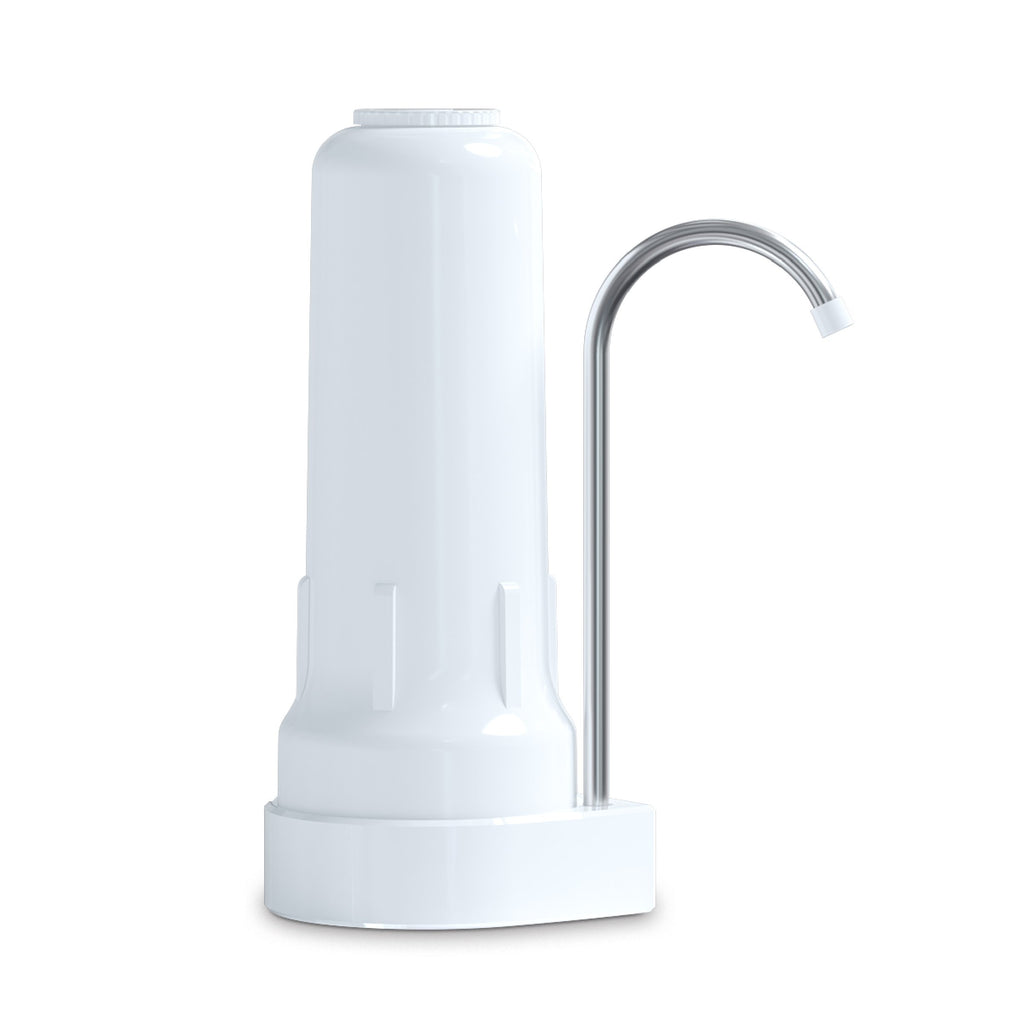 BOB Filter
BOB Filter
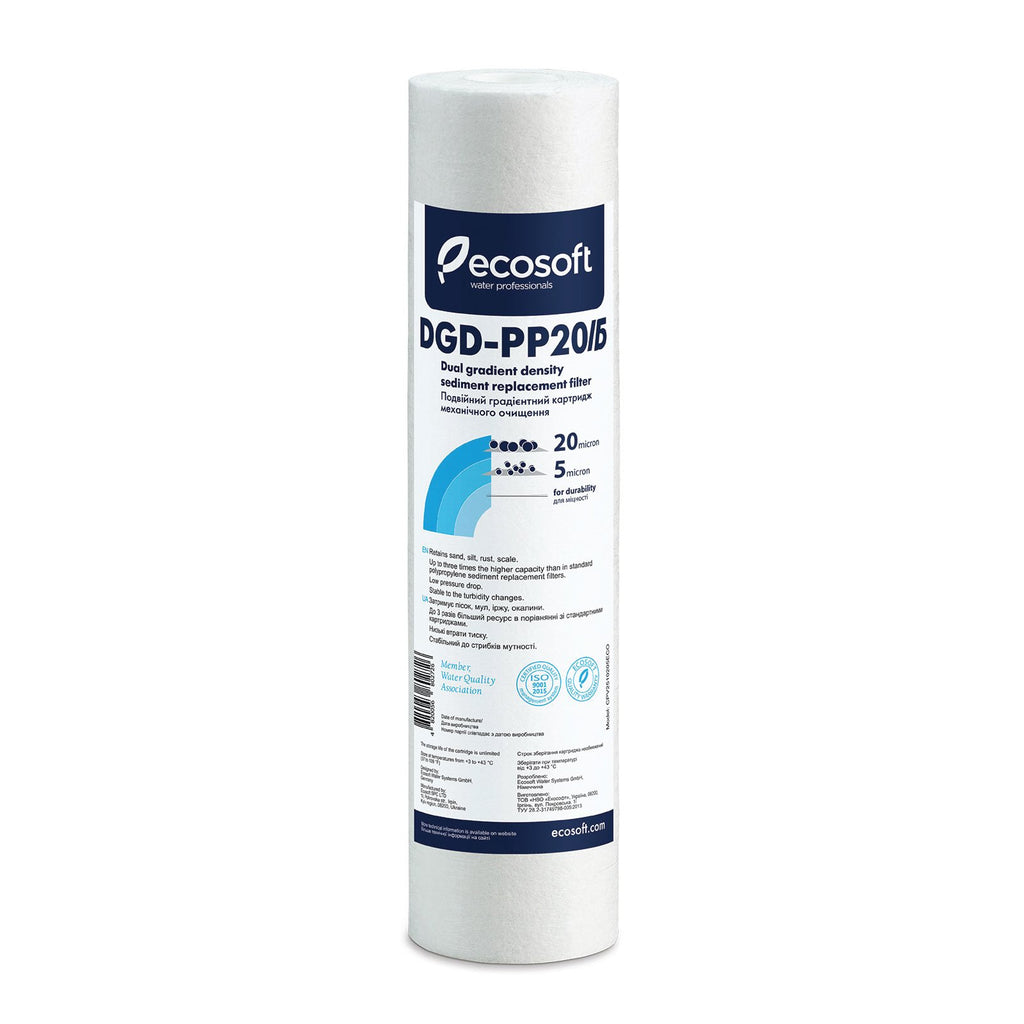 Replacement Filters
Replacement Filters
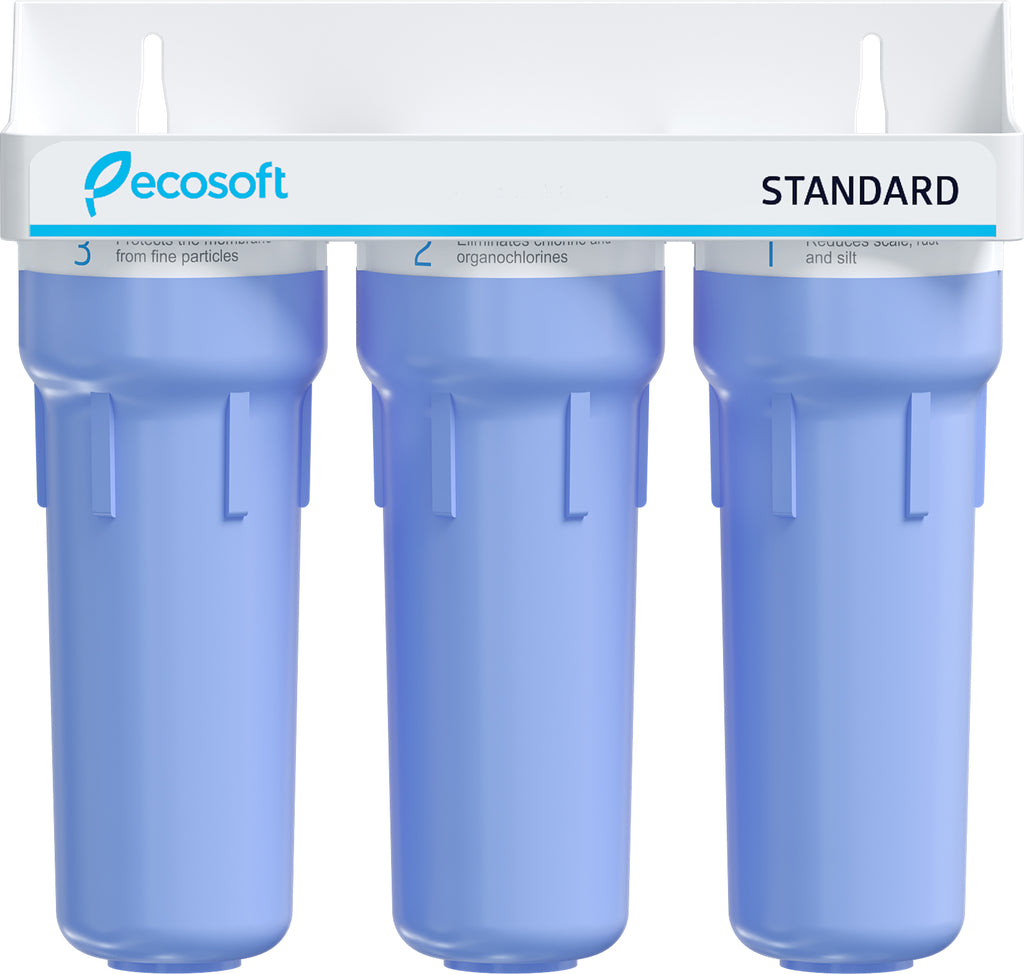 Under Sink Water Filters
Under Sink Water Filters
 Pitchers
Pitchers
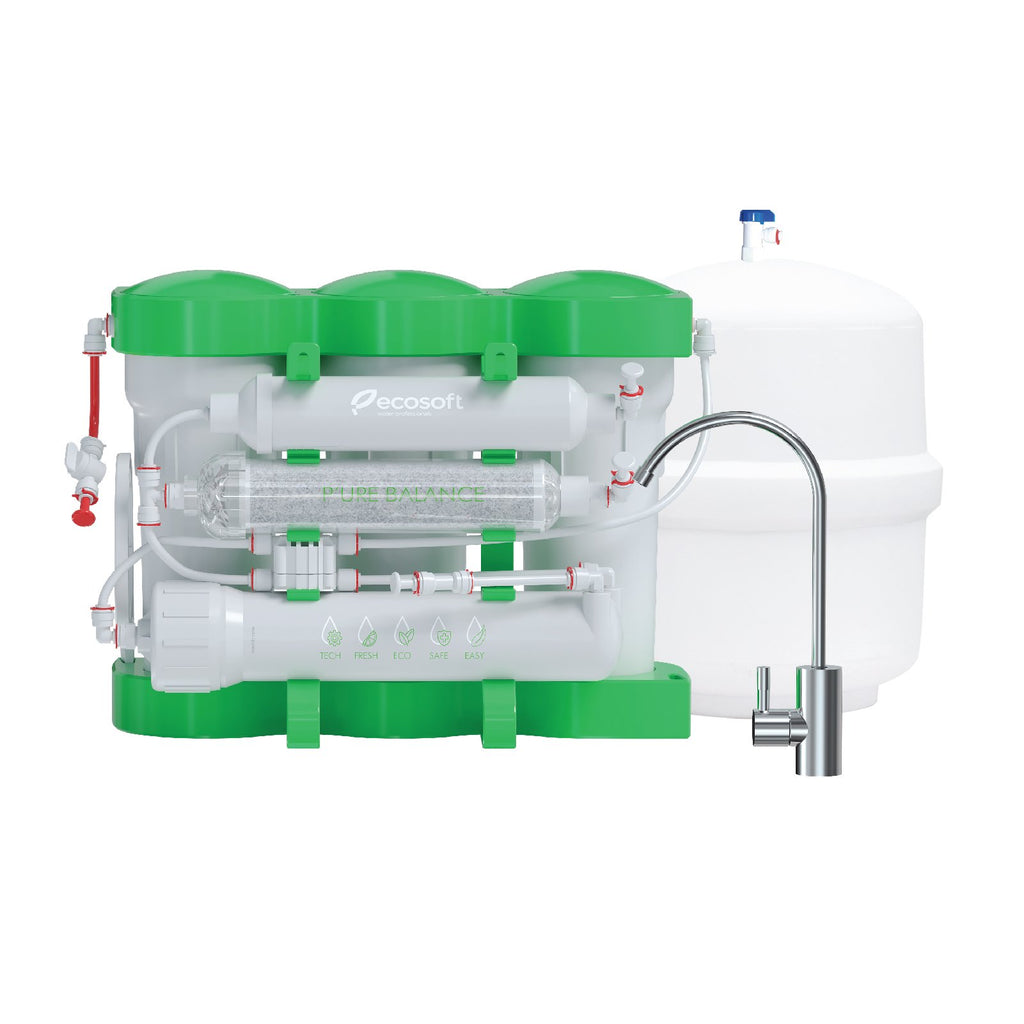 P'ure Series
P'ure Series
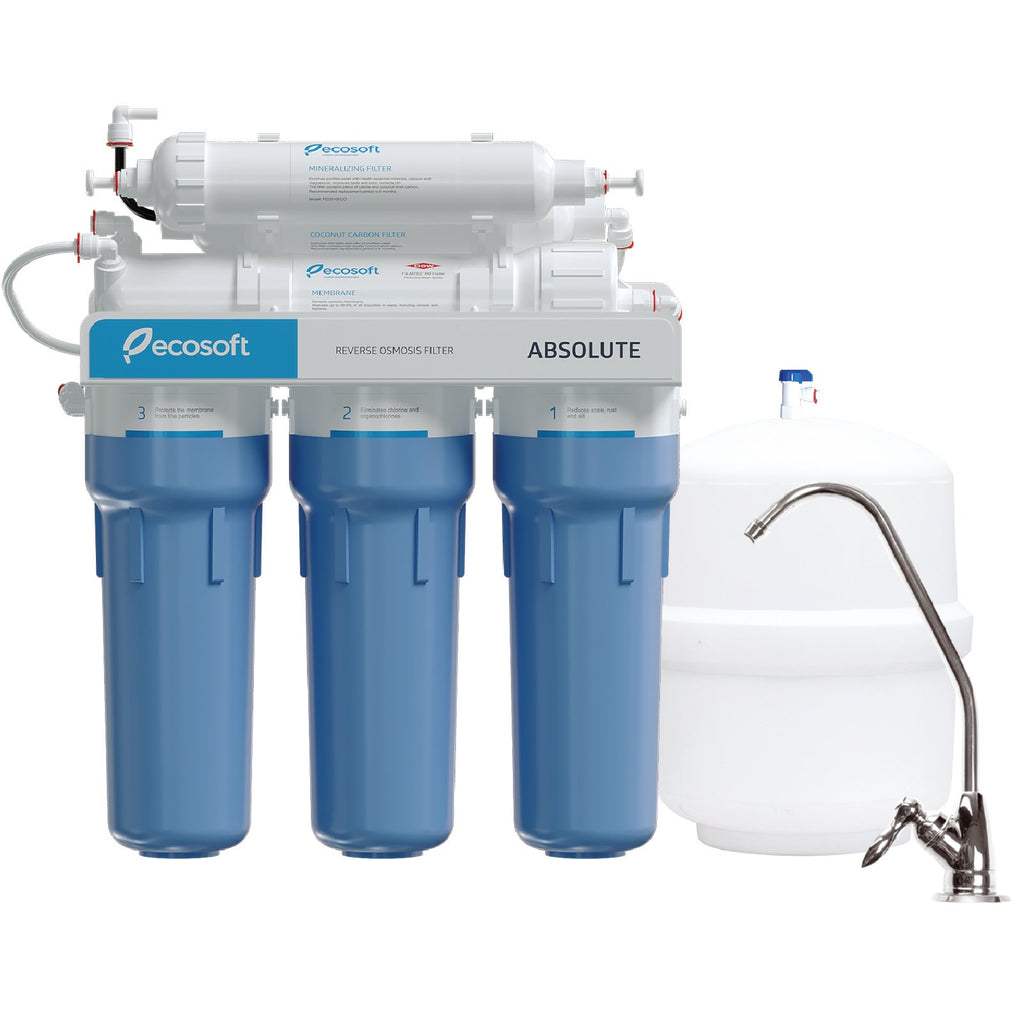 Absolute Series
Absolute Series
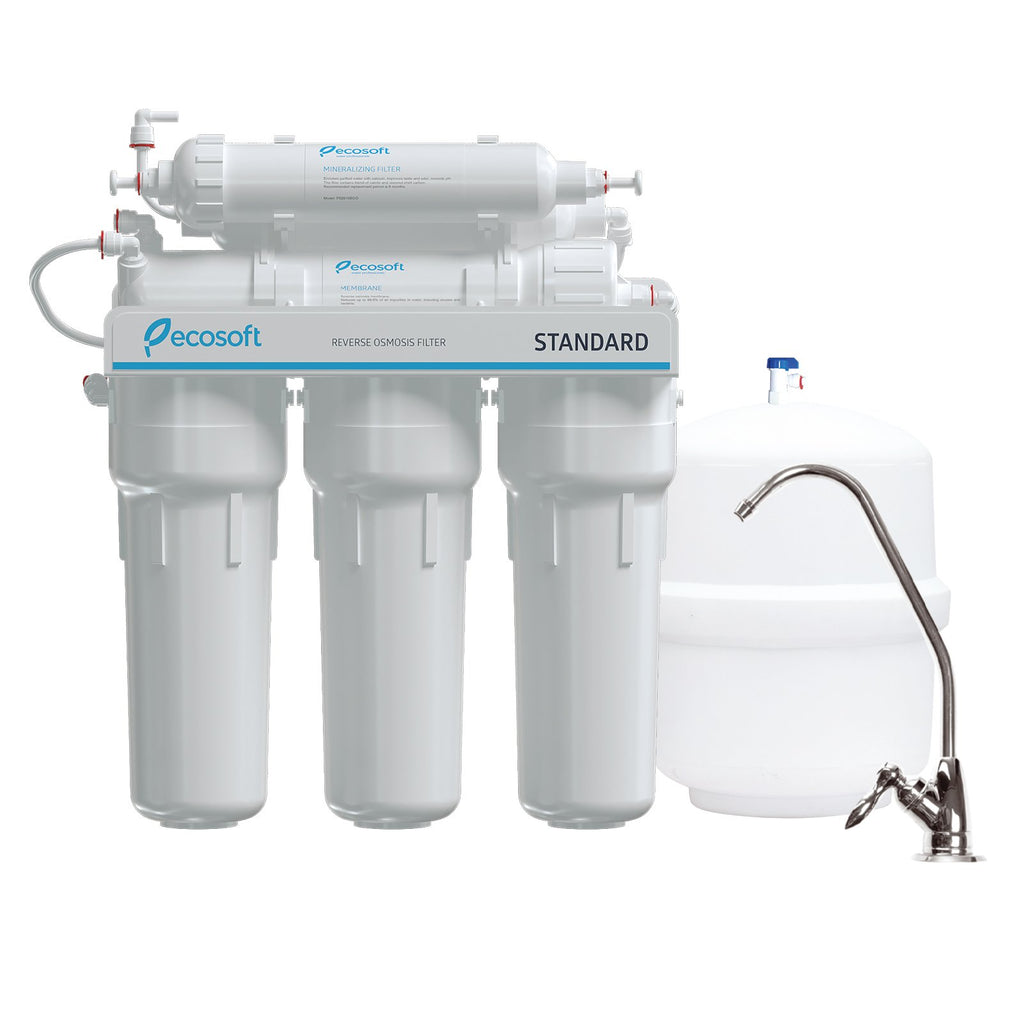 Standard Series
Standard Series
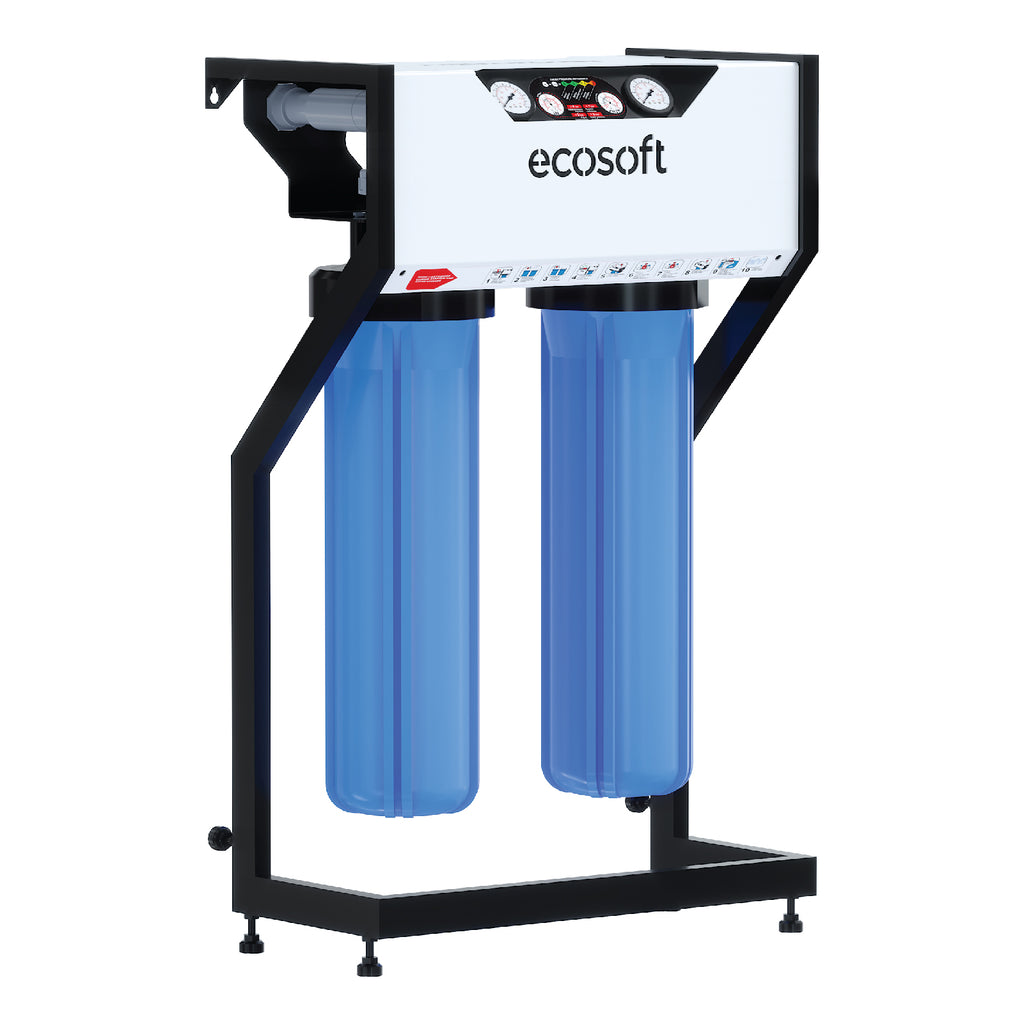 Aquapoint
Aquapoint
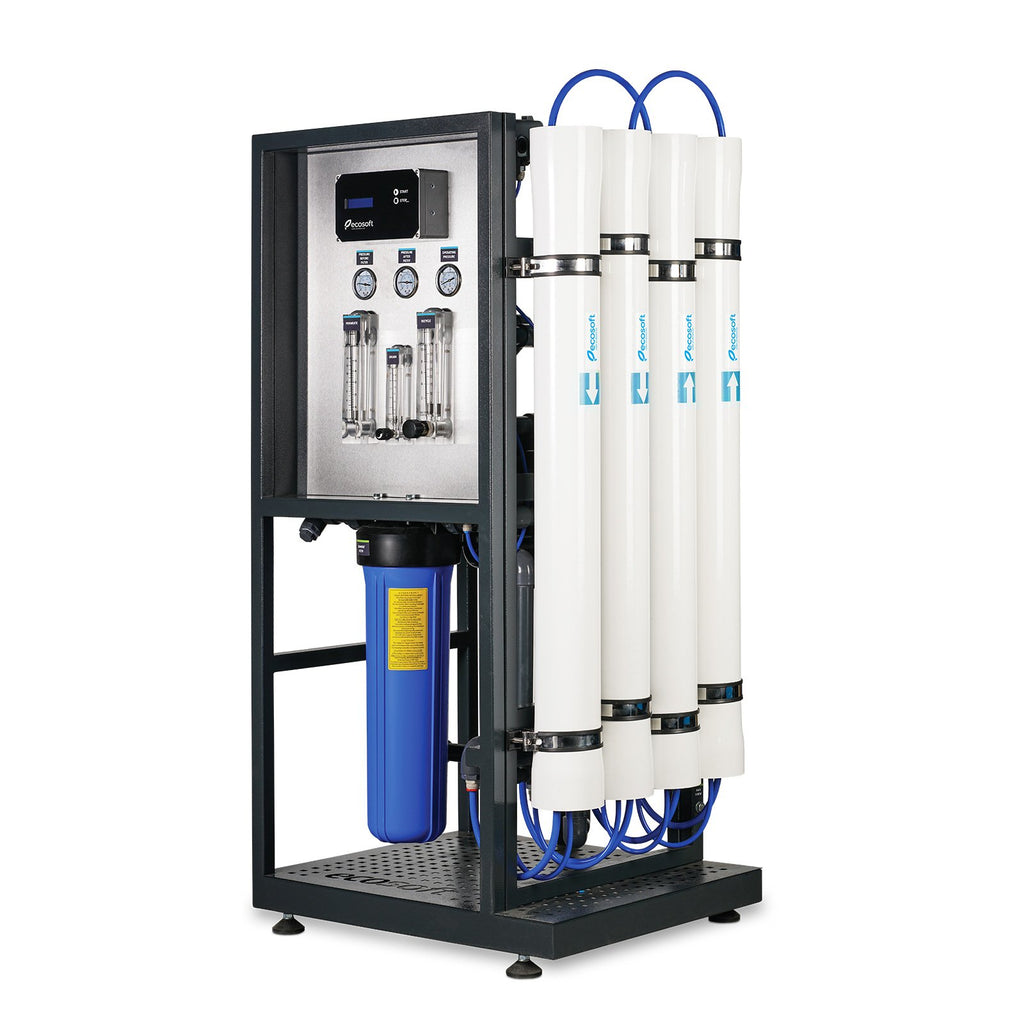 Large-Scale RO Systems
Large-Scale RO Systems
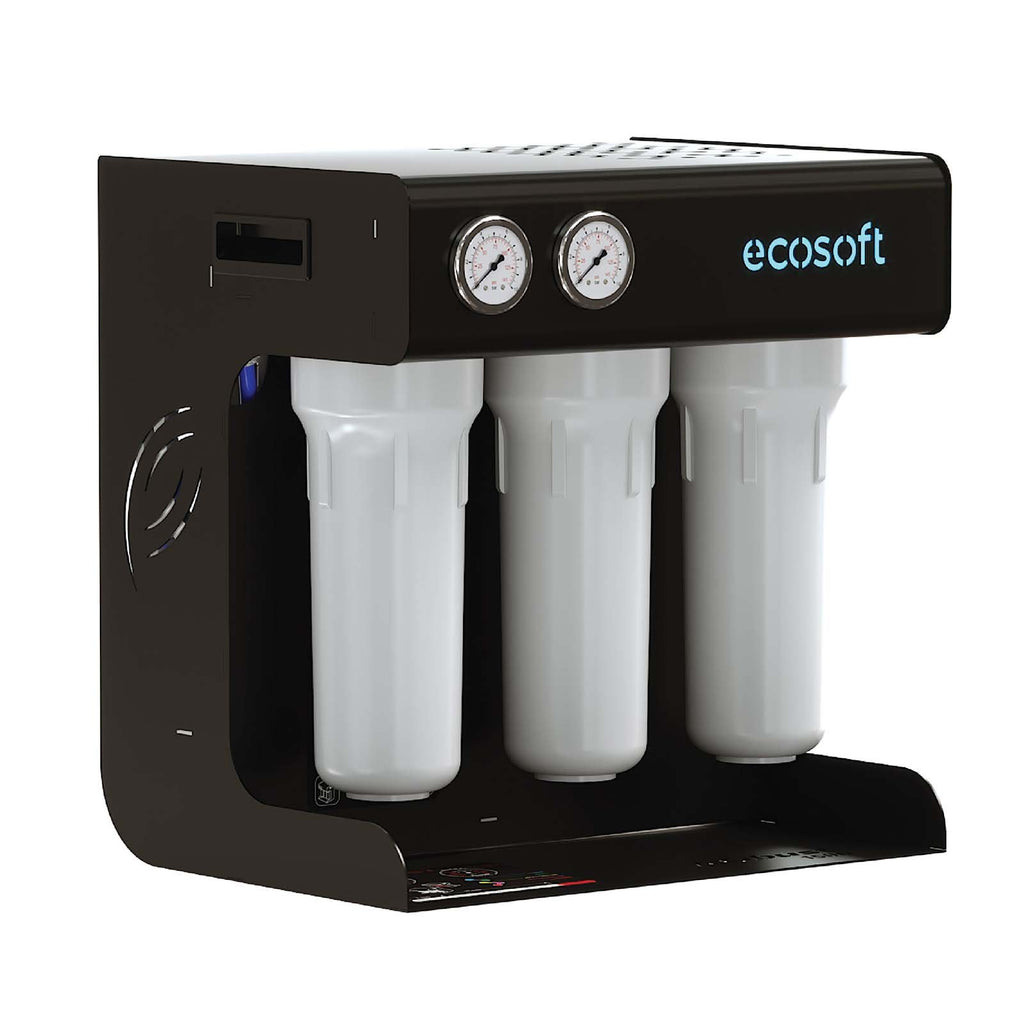 ROBust RO Systems
ROBust RO Systems
 What We Filter
What We Filter
 Why Ecosoft
Why Ecosoft
 Health
Health
 Eco-Friendly
Eco-Friendly
 Discover Water
Discover Water



